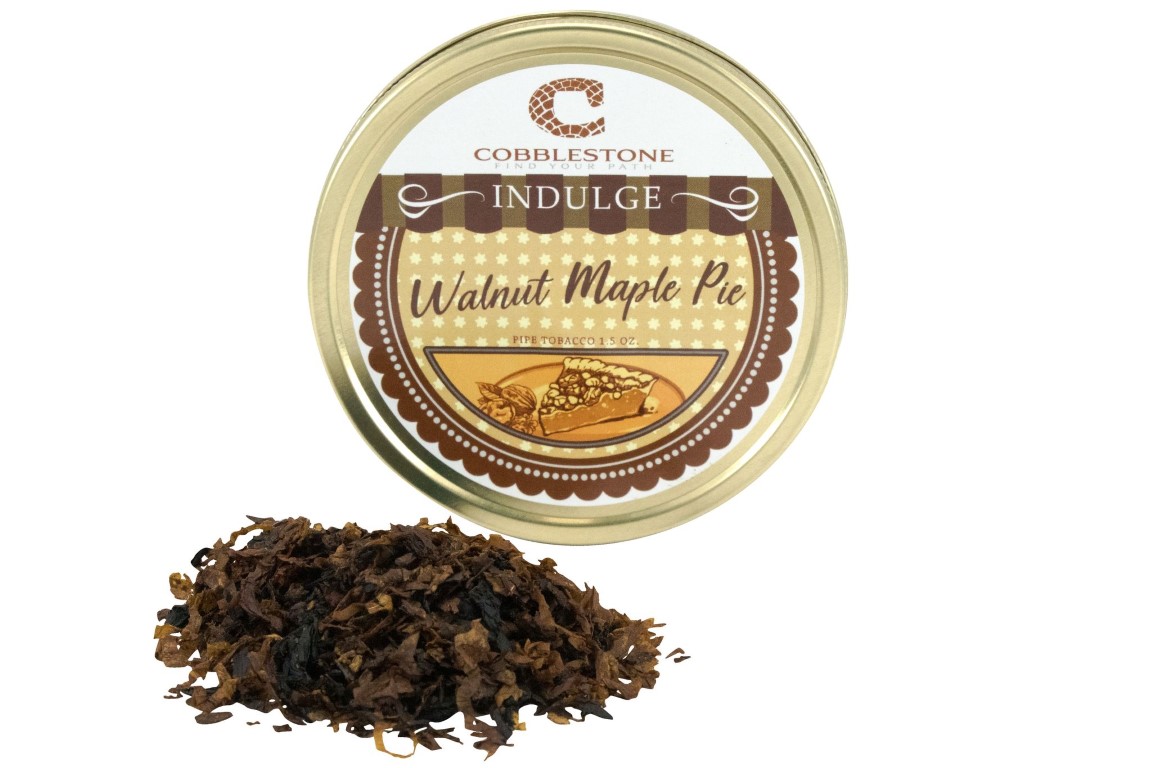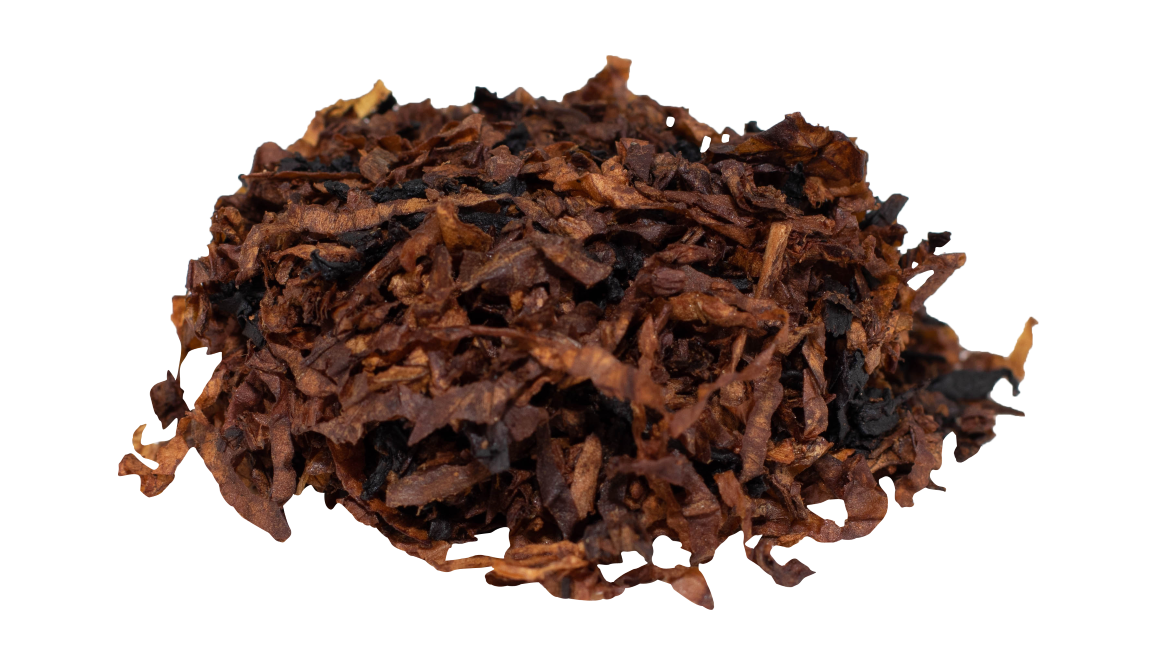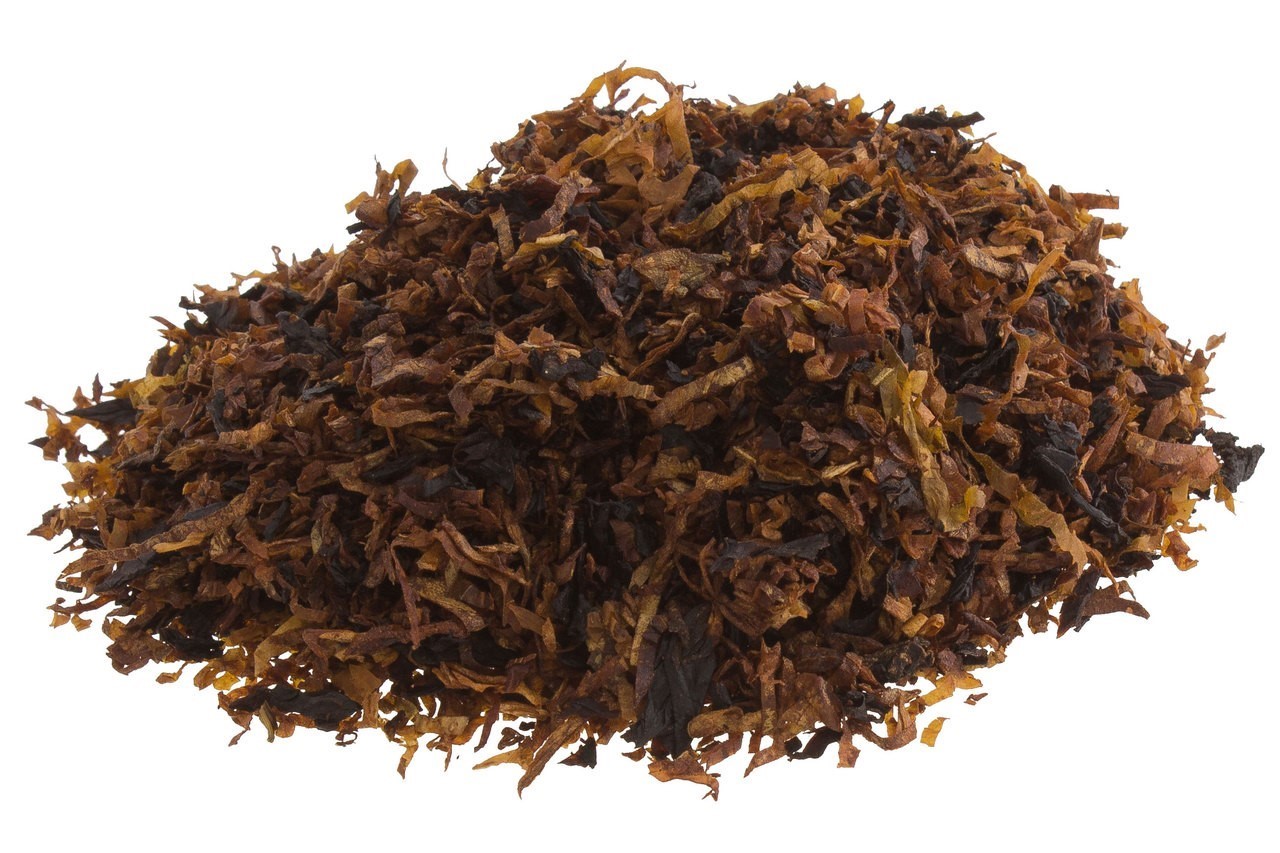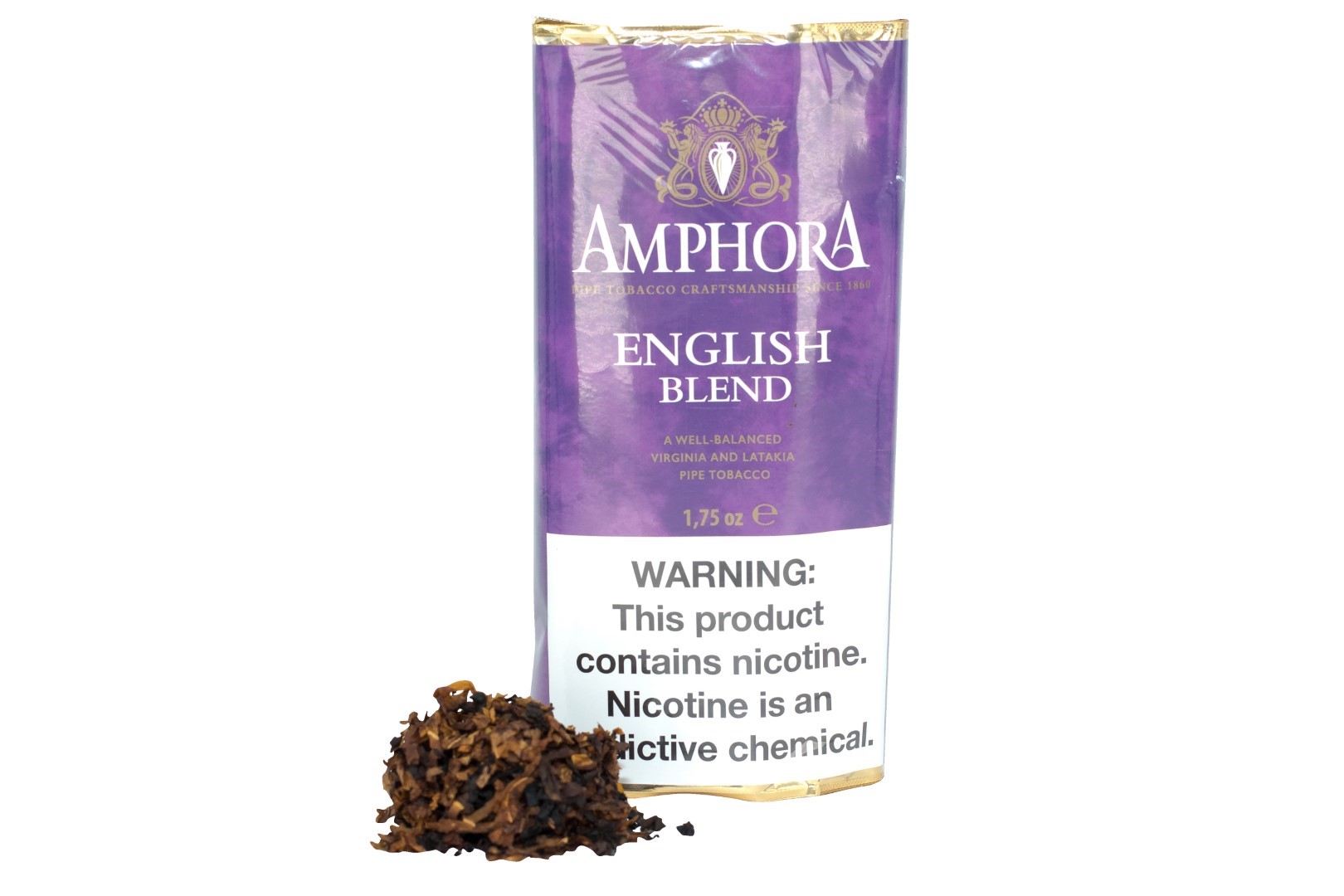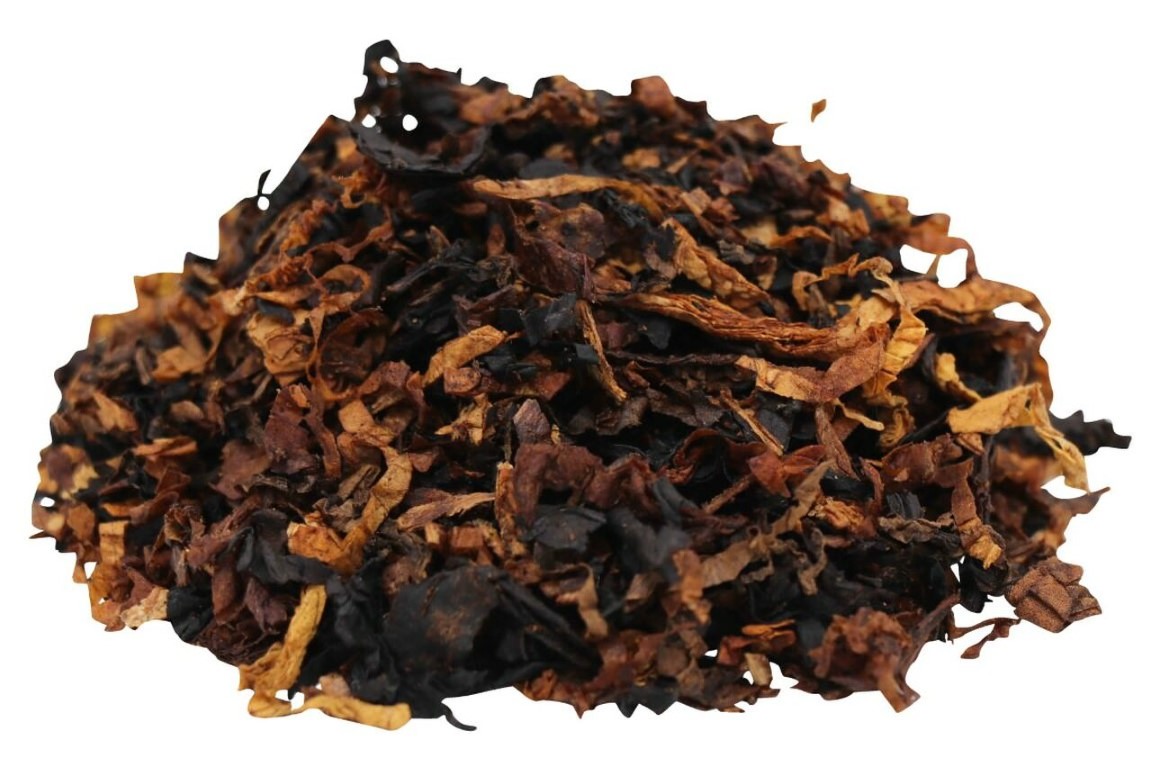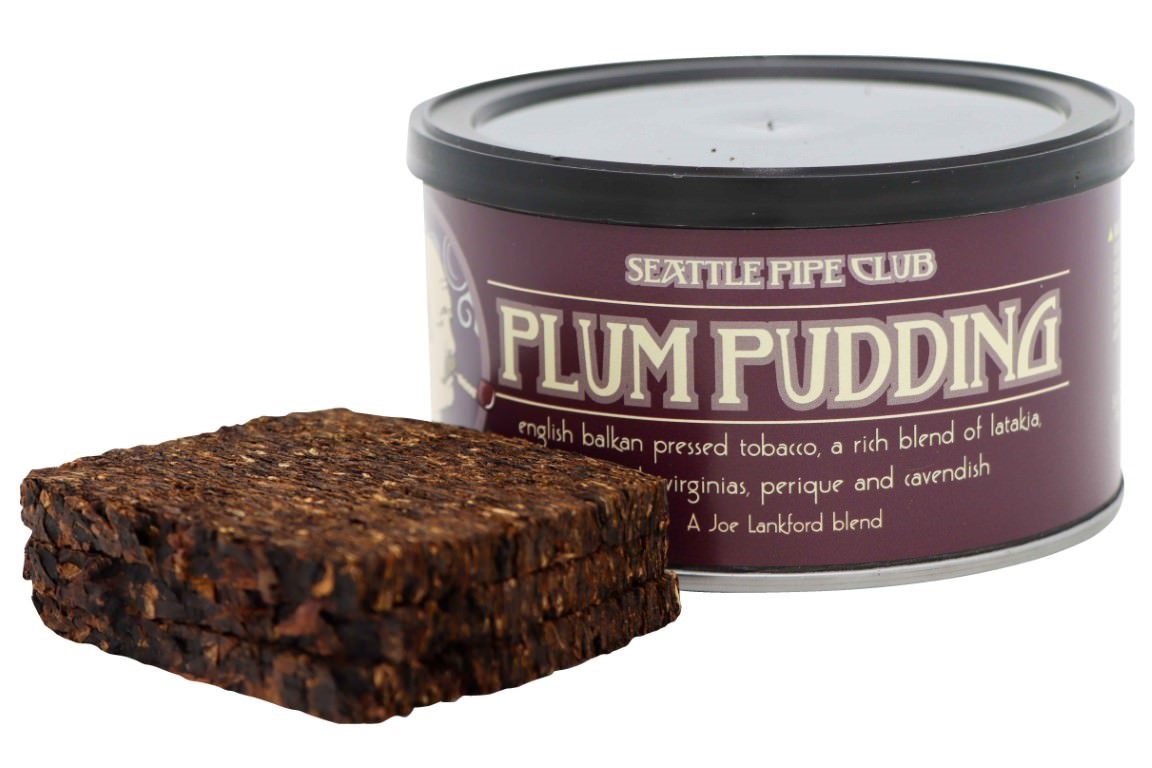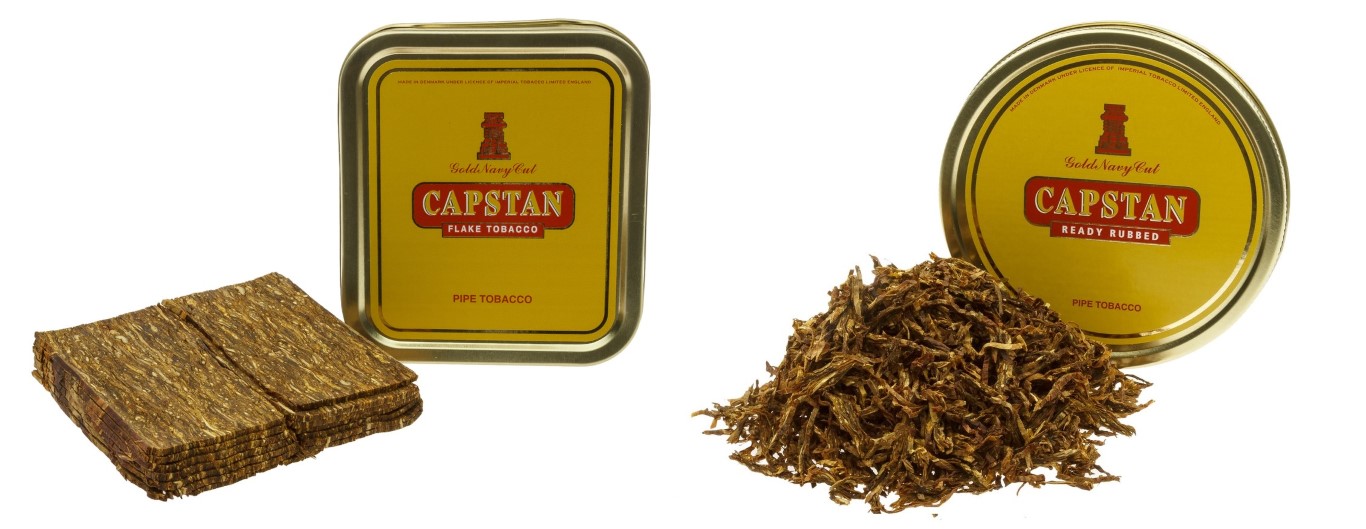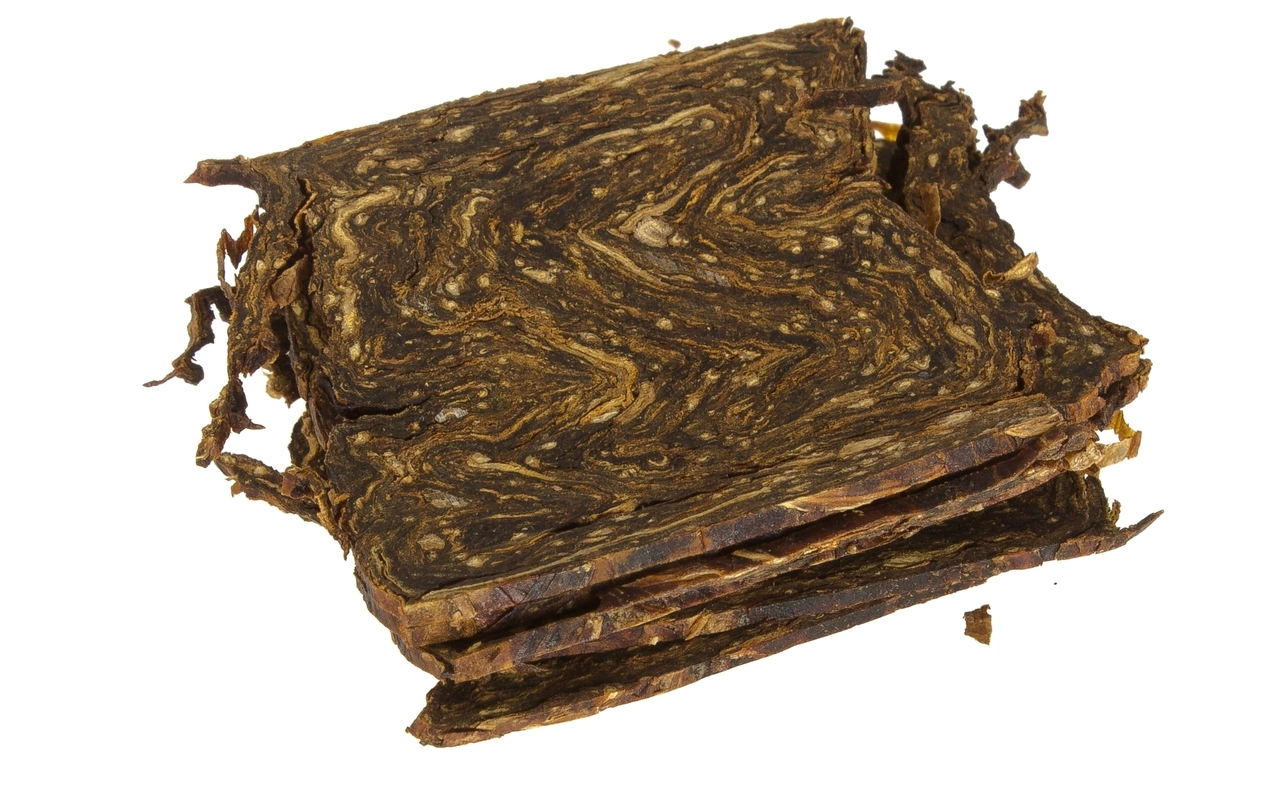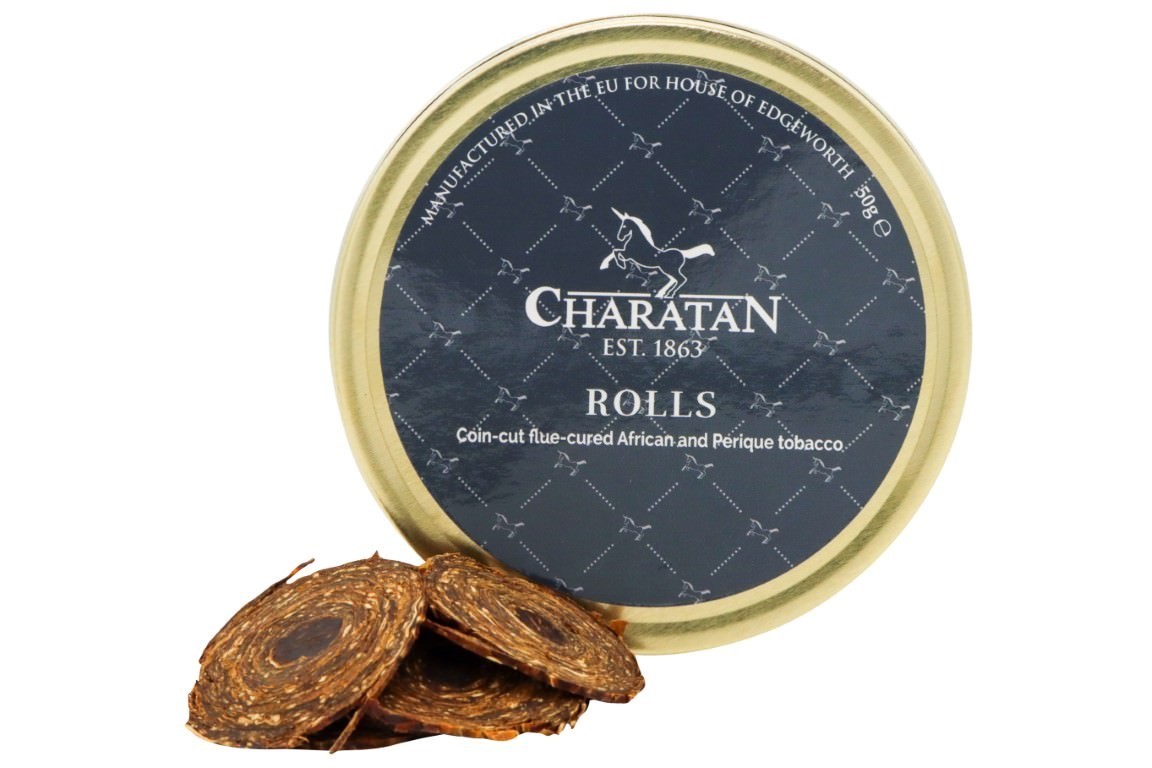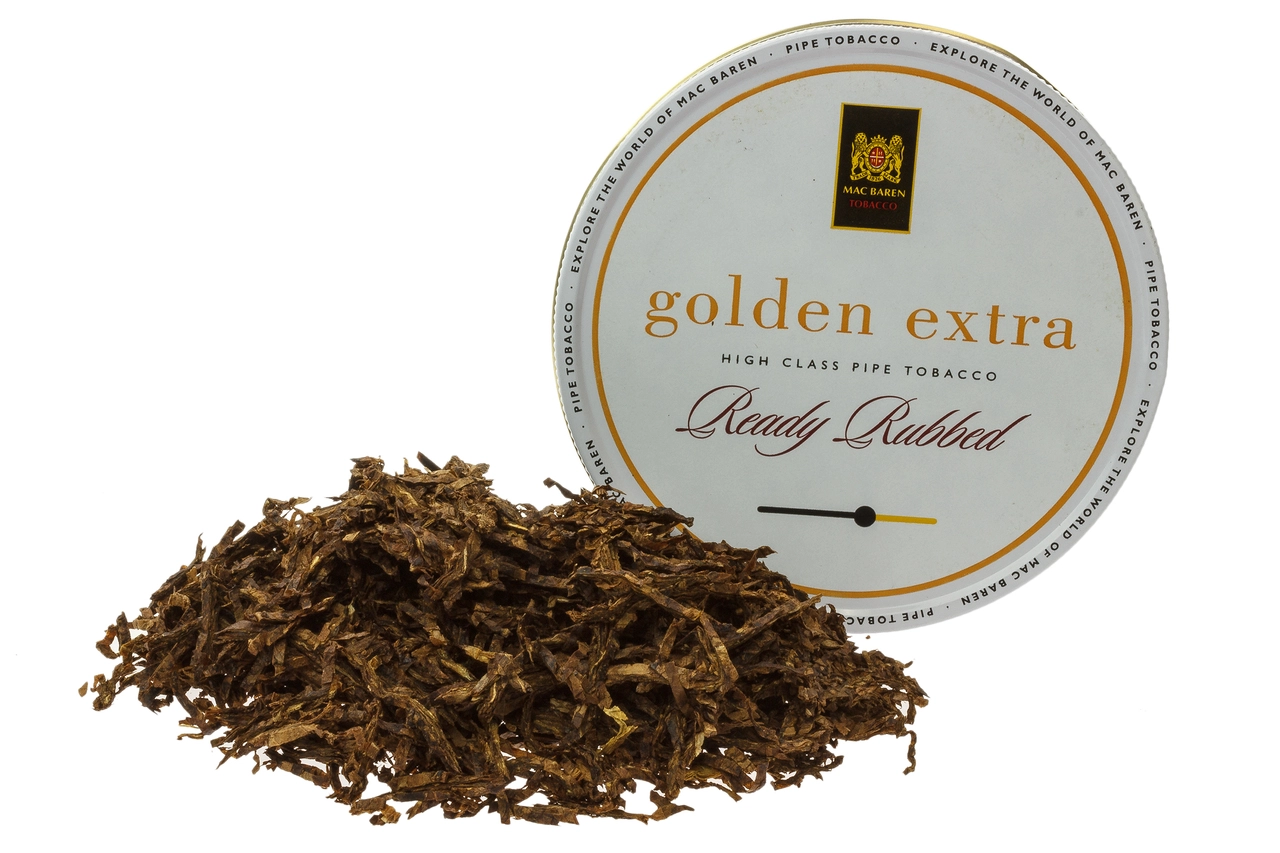10 Best Pipe Tobaccos for Beginners
Posted by Greg Rosenberg on 27th Jan 2023
I will preface the list with information that I feel may be beneficial to the beginner pipe smoker looking for blends to try. However, you can skip right to the blends with the table of contents below.
Here are the best pipe tobaccos for beginners:
- Cobblestone Maple Walnut
- Sutliff Z92 Vanilla Custard
- Lane Limited 1-Q
- Amphora English Blend
- Newminster No.17 English Luxus
- Seattle Pipe Club Plum Pudding
- Capstan Gold Navy Flake
- Peter Stokkebye PS 402 Luxury Twist Flake
- Charatan Rolls
- Mac Baren Golden Extra
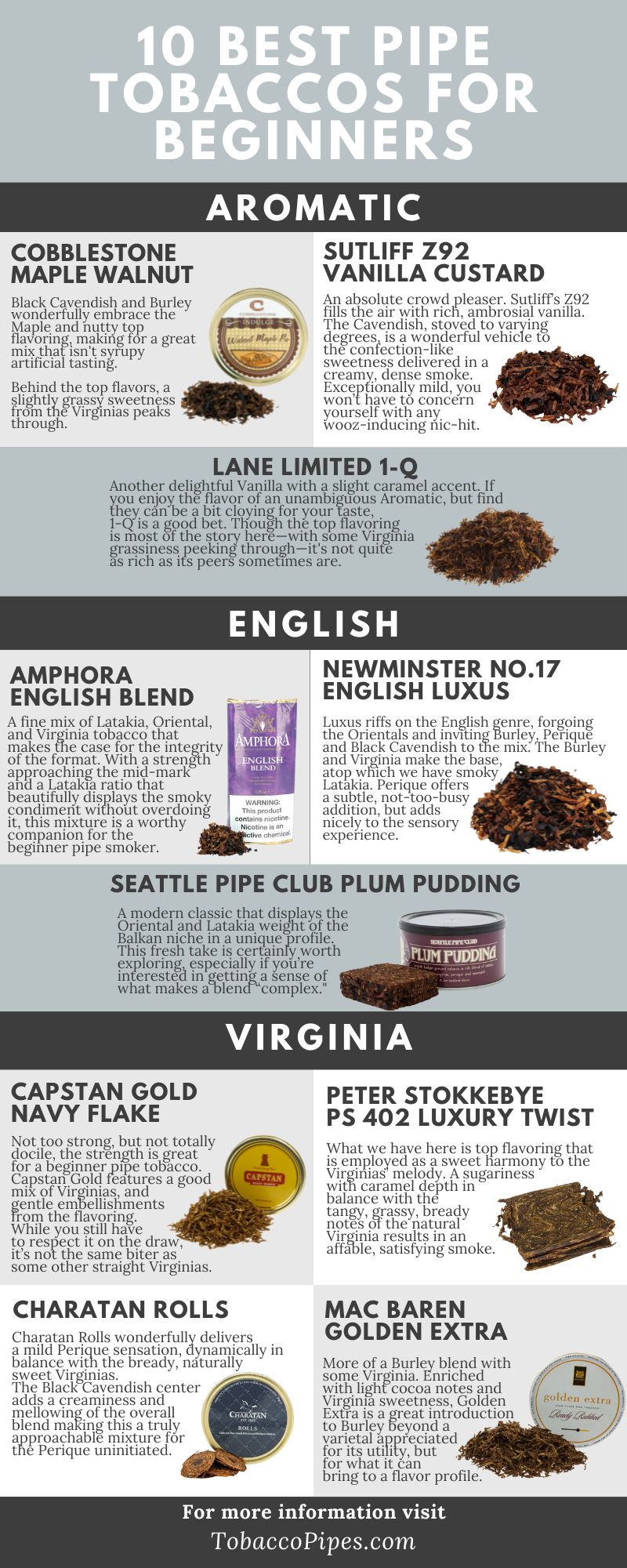
With so many options and opinions, choosing the best pipe tobacco for a beginner pipe smoker can be a difficult process. Myriad factors determine one’s reaction to a blend—from personal taste right down to the chemistry of their tongue. What bites one tongue may not another, what makes a “strong” nic-hit is a personal perception. One experienced smoker’s advice might sound like a sadistic joke to another. “You recommended what?!”
No doubt, this is a symptom of what makes pipe smoking the enigmatic delight that it is—an indulgence that is boundless in exploration and personalization—one that you can bask in with others while knowing your experience is all your own. But before that enchantment touches ground, the beginner pipe smoker has some searching to do, and some technique to learn.
Every facet of pipe smoking—be it the blend, cut, or pipe shape and material—carries pros and cons in terms of new-smoker-friendliness. The most palatable blend to the new smoker might also be the one that teaches them the pain of tongue bite; the cut that’s more difficult to pack might have a more seamless burn. It’s hard to say precisely what will and won't be best for someone Learning About Pipe Smoking. But what we can do is explore the common wisdom and try to find some context for choosing the best tobacco blends to start with.
Given that no advice is sure to apply universally, this guide will make suggestions for a wide range of blends. Even though some may be a bit easier than others to work with at first, I think trying a bit of everything is important to both exploring your taste, as well as developing an adaptability to the many variables involved in pipes smoking. But we’ll definitely orient those suggestions toward those which are inviting to beginners, making recommendations that navigate the hurdles of inexperience.
Basically, I hope for this list of the best pipe tobaccos for beginners to not only help new smokers find blends that agree with them, but that can help along in the exploration of pipe smoking as well.
Types of Tobacco Cuts
Before we get into blends, let’s have a brief overview of the different types of tobacco cuts. The cut of a blend factors into how hospitable it may be to an inexperienced pipe smoker. The suggestions in this guide will have a few different cuts so I want to make sure you have context for each.
Remember that, while you may develop a preference for certain cuts, all of these are conducive to a great smoke, some just take a little more trial and error to get right. Packing is a balancing act.
Ribbon Cut

Although I do think trying a few different cuts early on is a good idea for a beginner to get the sense of the impact each variable has on the smoking experience, ribbon-cut should probably comprise a good deal of your early blends.
Ribbon is the most common pipe tobacco cut. It often refers to a handful of other more specific cuts such as shag or broad. Much like pipe shapes, blend types, and all matter of things pipes and tobacco, there’s not really an industry standard to go by.
Due to the loose, fine cut of ribbons, they don’t inherently require any steps before packing ( Although You May Want To Let Dry For A Bit Depending On The Blend). The narrower cut varieties such as shag can be easy to pack too tight, but in general these cuts make the packing process easy and have little temperament in taking a light.
Flake
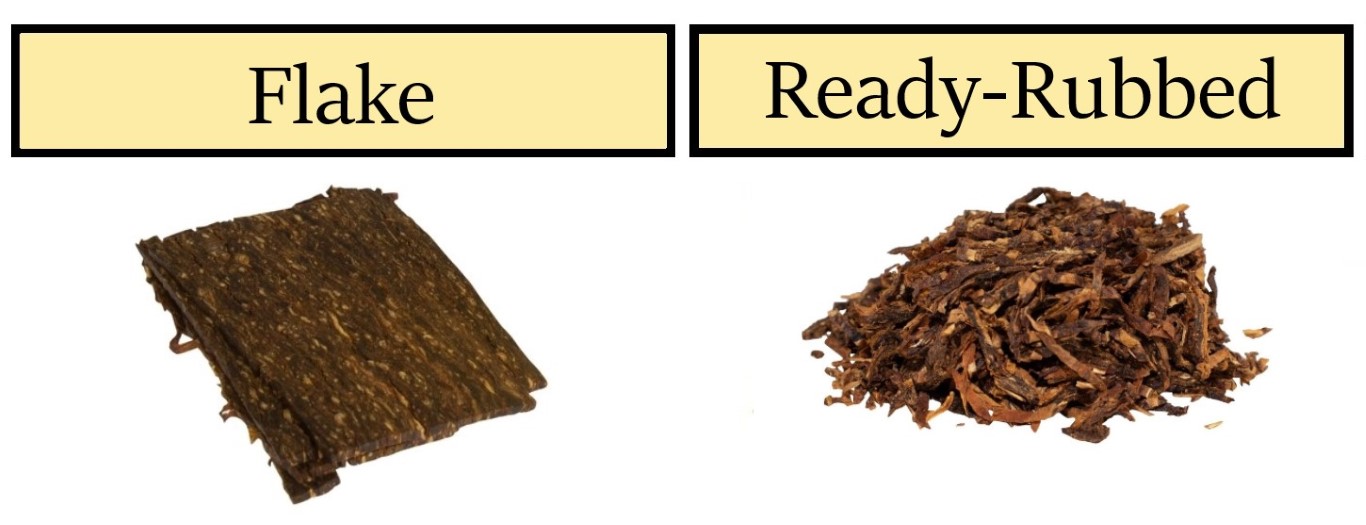
Flakes come in jerky-like slabs of tobacco that have been pressed under heat. This process leads to a mixing of flavors between the tobacco varieties.
Flake will most often be “rubbed out,” or rolled in the fingers to break up the flake into strands to be packed, but sometimes they can simply be folded into the chamber. Because flake is generally tougher, it can be finicky getting the pack just right, especially if folding it in, but it’s a rewarding cut once you get it down. Having to rub out the flake gives the smoker a lot of control over just how fine they want it. Many seasoned smokers may even strategically stratify the consistency of tobacco in their chamber. And some attest that, once you do have a better gauge for packing flake, it can offer a more controllable burn rate.
You may also see ready-rubbed as a cut. Ready-rubbed looks to be between a ribbon-cut and a flake—it’s strand-like but less fine than ribbon. This is simply flake tobacco that has been somewhat rubbed out before packaging.
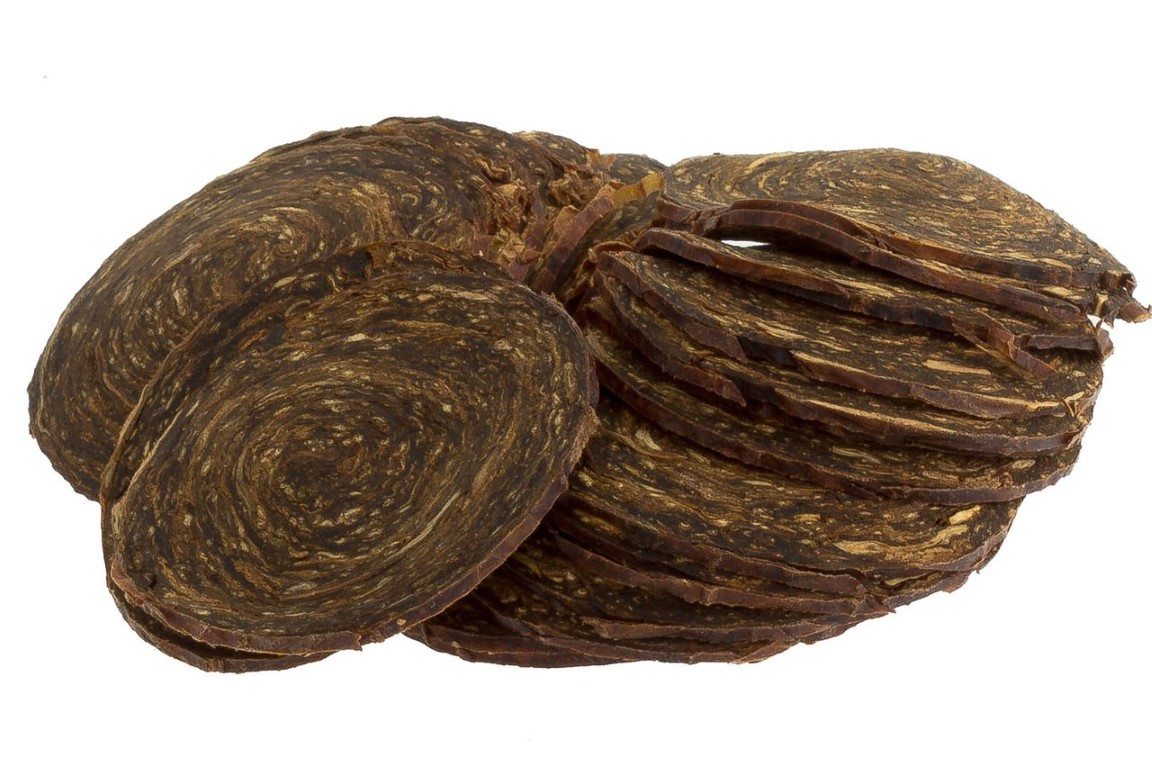
There is also Coin Cut (may be referred to as medallions, rolls, or curly cut), which is a rope cut that has been severed into small discs. You can just think of coin cut as a variety of flake. Some tobaccos come unsliced in rope cut, but that’s a niche beyond what we’ll go into here.
Cake/Plug
Crumble Cake—sometimes simply referred to as cake—is named for the legendary Krumble Kake which Sobranie House manufactured for Smoker's Haven (hence why you’ll still see that spelling, such as with Sutliff’s Crumble Kake Series or Cornell & Diehl’s Kajun Kake).
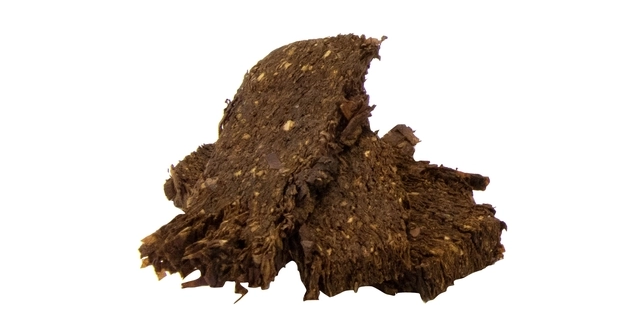
Cake is made by putting ribbon tobacco under steam compression, pressing the tobacco into large bricks before being dissected into brownie-like blocks. These are easy to pull a piece from and, well, crumble. Sometimes they’ll be sliced thinner into slabs, flake-like but not quite as dense (Sutliff Red Virginia for example, pictured above).
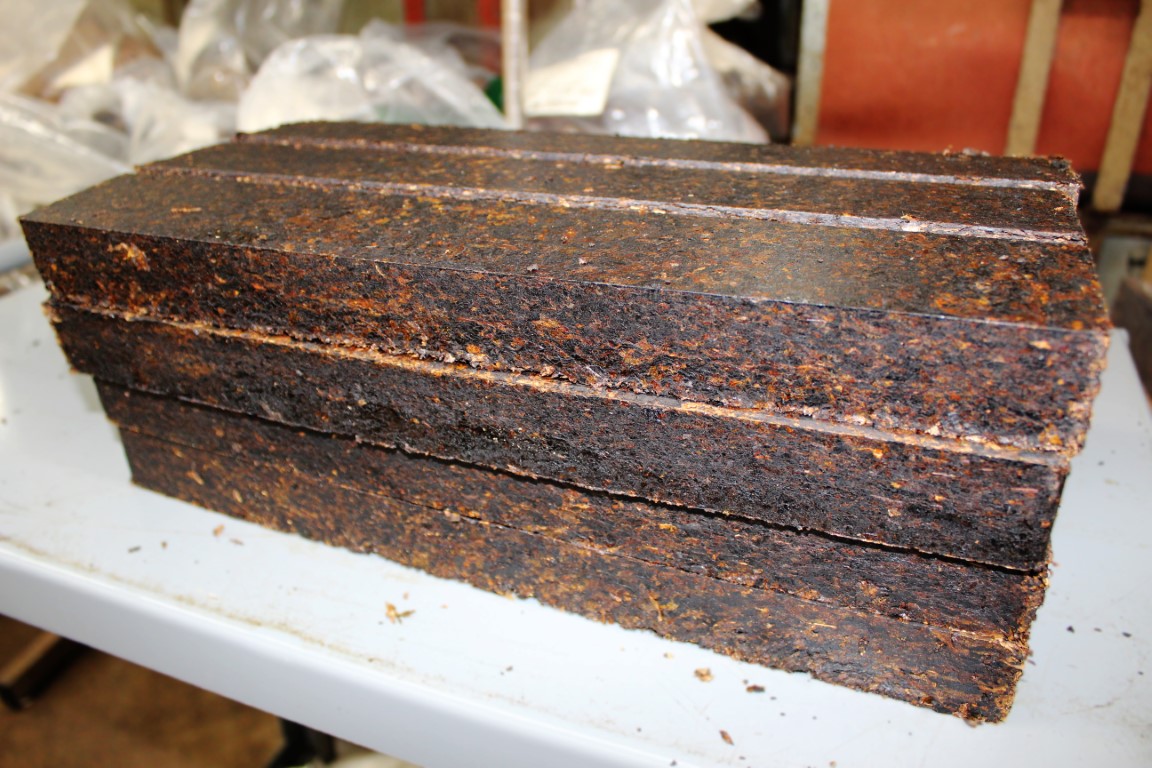
Then we have Plug Cut. Cake is a little more user friendly, but plug is still nothing to be deterred by. Plug is usually denser than cake and is easiest to break down by first cutting off a section with a knife. Classically, larger pieces of leaf are pressed to make a plug, but that may not always be the case. Plugs can also sometimes be easy to pull apart like a crumble cake.
As you'll see with many aspects of the pipes and tobacco, categories aren't so neat and get us so far. Different blending houses may have their “take” on a certain way of doing things, so don't get too hung up on the jargon.
Sometimes pressed tobacco will be diced down to small cubes, essentially tiny chunks of cake with the ease of a smaller cut that asks little in terms of preparation.
Blends
We’ll focus in on three blend families: Aromatic, English, and Virginia (with a nod to Burley). However, this is just a broad divvying up of infinite possibilities. With all the tobaccos that can be blended in different ways, these distinctions can categorize blends based on their components and star players, but there are many sub-genres within them and none of it’s standardized. They’re convenient categories for grouping blends and discussing them, but many blends challenge an easy classification. Even between these broad categories there can be plenty of overlap. Take an English, give it a top flavoring, and you would best describe it as an Aromatic English, no more one than the other.
I only belabor this point because I remember as a beginner, I was dizzyingly confused thinking I didn’t understand how it all worked, but I was really just overthinking it. I’d hear a blend categorized one way, then another, and think “which is it?” I was expecting to find some objectivity.
These are convenient ways of categorizing while we go through some different blends to try to understand why they may be right for you, but there are always exceptions.
Remember, all of the pros and cons ahead are not sure to apply to all beginners but are sourced from common experiences. Another reason to give all things a fair shake.
Aromatics
We’ll start with Aromatics as they’re often recommended pipe tobacco blends for beginners and seem to be where many start out.
Pros
Since Aromatics feature one or more added flavorings (aside from casing which most blends have), they are often regarded as more palatable pipe tobaccos for beginners. With flavors of fruit, chocolate, Liquors, etc.—they offer a more civilian introduction. For this reason, these can also be some of the most agreeable blends for company, often emitting delightful aromas.
Other blends may impart their forward flavor through condiment tobaccos such as Perique and Latakia, often acquired tastes. Other blends may use tobaccos that aren’t exceptionally potent, the nuances being what tells the story. These may not pique the interest of a pipe smoker who has yet to pick up on the subtleties of flavor .
One other positive to Aromatics for beginner pipe smokers is that while they can be forward in flavor, they often have a good portion of Cavendish, and thus aren’t especially bold in terms of body. Cavendish is a mild tobacco (really a Virginia or Burley that has undergone a particular process). It’s a mellow varietal that takes on other flavors well, making it especially useful in Aromatic blends.
Keep in mind that really all kinds of blends that fit into other categories can be flavored and may be classified in a number of ways. This however is a benefit too. While the wealth of Cavendish Aromatic blends poses an opportunity to find pleasant-tasting, light-bodied blends, heavier blends that use flavoring with condiment tobacco are great for exploring these more robust varieties.
Cons
Aromatics are certainly inviting in their flavor and scent, but because of their heavy casing, some can be difficult for inexperienced pipe smokers to puff without getting tongue bite.
There are a lot of factors that go into what causes tongue bite. Some tobaccos are more prone to it, certain people are more susceptible. Tobaccos that smoke more wet often smoke hotter. The top-flavor on Aromatics makes them smoke more wet, thus they can be notorious deliverers of tongue bite.
As you gain more experience, you get a handle on all the little nit-picks that can keep your pipe burning cool. Beyond cadence, how you dry, pack, and light your tobacco are all relevant to controlling how hot you’re smoking.
Finally, I think the supposition that non-Aromatics will prove less palatable may be over-assumed. It’s true for some, but far from a rule. It’s Avoiding Harsh Nic-Hit that I find to be most important in these early searches (provided you aren’t coming to pipe smoking with tolerance from other mediums of nicotine use). To be fair, this point isn’t exactly a con toward Aromatics as beginner pipe blends; it makes them no less inviting that they aren’t alone in their approachability.
Aromatic Recommendations
Cobblestone Indulge Walnut Maple Pie
- Tobacco: Burley, Virginia, Black Cavendish
- Flavoring: Maple, Nut
- Cut: Ribbon
- Strength: Mild
- Packaging: Tin
Cobblestone’s Walnut Maple Pie, part of The Indulge Series, is a great place to start for those not looking for bold tobacco flavor out of the gate and want that mild Aromatic with little nic-hit. Black Cavendish and Burley wonderfully embrace the top flavoring, the Burley offering a mild body. Maple and nut make for a great mix that isn’t syrupy-artificial tasting. Behind the top flavors, a slightly grassy sweetness from the Virginias peaks through.
Walnut Maple Pie is only one blend in the Indulge series which also includes Crème Brulee, Cherry Delight, and Vanilla Custard. If the properties of this blend seem right to you but any of these other flavors seem more up your alley, they are all excellent choices.
Hint: might smoke a little wet right out of the tin, try giving a little drying time.
Sutliff Z92 Vanilla Custard
- Tobacco: Black Cavendish, Burley, Cavendish
- Flavoring: Vanilla, Cream
- Cut: Ribbon
- Strength: Very Mild
- Packaging: Bulk
An absolute crowd pleaser. Sutliff’s Z92 fills the air with rich, ambrosial vanilla. The Cavendish, stoved to varying degrees, is a wonderful vehicle to the confection-like sweetness delivered in a creamy, dense smoke. Exceptionally mild, you won’t have to concern yourself with any wooz-inducing nic-hit.
This probably isn’t the one if you’re looking to branch into non-Aromatics. Though you may glean faint Burley nuttiness, you’re not getting much tobacco taste here. Z92 is simply a straight forward, true to its name, Aromatic.
Lane Limited 1-Q
- Tobacco: Cavendish, Virginia
- Flavoring: Vanilla
- Cut: Ribbon
- Strength: Mild
- Packaging: Bulk
Another vanilla Cavendish, Lane 1-Q is a quintessential Aromatic blend. Vanilla and caramel are in abundance here. If you enjoy the flavor of an unambiguous Aromatic, but find they can be a bit cloying for your taste, 1-Q is a good bet. Don’t get me wrong, the flavoring is most of the story here, with a bit of Virginia grassiness peeking through, but it’s not quite as rich as its peers sometimes are.
English Blends
An English Blend in the broadest terms is one that uses Latakia as the dominant flavor—often joined by Orientals (sometimes referred to as Turkish) and Virginias. When the Oriental varieties play a larger role, we’ll often hear the blend referred to as a Balkan. Remember, blends in these categories might be parsed differently depending on who is smoking them, don’t get too frustrated on the smaller details.
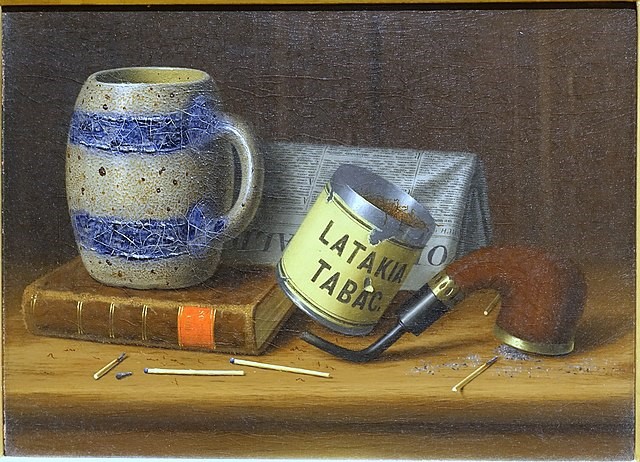
Pros
English blends are great for some beginners because they offer a non-Aromatic that is still rich in flavor. However, instead of the topping imparting a forward flavor, it’s the assertive Latakia—a condiment leaf that has been through a smoke curing process which gives it that smoky, campfire essence.
Anyone will pull out that distinct flavor from the jump. No doubt, there’s more complexity to find as you develop your taste—how the different tobaccos complement each other, how the ratios of the tobaccos used bring out different properties—but in the meantime, it gives the inexperienced palate something interesting and overt to grab onto while getting acquainted with all the nuances.
English blends are also generally easier to keep a moderate burn temperature on as the fire-curing process imparts a slow burning quality to Latakia.
Cons
Although English blends also offer a pronounced flavor to the beginner pipe smoker, Aromatics are often recommended for the variety and familiarity of the flavors. Aromatic flavors come in many of the same varieties as juices, candies, and liquors. It isn’t as though all Latakia tastes the same, especially when abutted by different tobaccos in a blend, but to the budding pipe smoker, much of the difference in flavor may not be so readily noticed, and the flavor that is pronounced might be an acquired taste.
However, if you have a taste for cigars, English blends may be a great place to start.
English Recommendations
Amphora English Blend
- Tobacco: Latakia, Oriental, Virginia
- Cut: Ribbon
- Strength: Mild - Medium
- Packaging: Pouch
In the Amphora series, Mac Baren master blender Per Jensen delivers a lineup of mixtures which expertly showcase the essential character of the familiar blend families. Amphora’s English Blend is no exception.
English Blend's simple title aptly conveys that this is indeed a delightful mix of Latakia, Oriental, and Virginia tobacco that makes the case for the integrity of the format. With a strength approaching the mid-mark and a Latakia content that beautifully displays the smoky condiment without overdoing it, this mixture is a worthy companion for beginner pipe smoker’s English introduction..
Newminster No. 17 English Luxus
- Tobacco: Black Cavendish, Burley, Latakia, Perique, Virginia
- Cut: Ribbon
- Strength: Mild - Medium
- Packaging: Bulk
Newminster’s English Luxus riffs on the English genre, forgoing the Orientals and inviting Burley, Perique and Black Cavendish to the mix. The Burley is used in decent measure here, employed beyond its function as an agent of balance. With the Virginias, it lends to the base of the blend, atop which we have smoky Latakia. Perique offers a subtle, not-too-busy addition, but adds nicely to the sensory experience.
It may seem like a busy blend with all the parts, but the condiment tobaccos are sparingly applied, not eclipsing the base. With the Black Cavendish mellow sweetness, Newminster English Luxus achieves consonance.
Seattle Pipe Club Plum Pudding
- Tobacco: Black Cavendish, Cavendish, Latakia, Oriental, Perique, Virginia
- Cut: Crumble Cake
- Strength: Medium
- Packaging: Tin
The sophomore hit from Seattle Pipe Club, Plum Pudding is a modern classic that beautifully displays the Oriental/Latakia weight of the Balkan niche in a unique profile. Expertly blended by Joe Lankford , the Virginia has more to say that we often get from this style. Perique offers a hint of spice and Black Cavendish smooths the edges and brings more body to this rich profile.
The Balkan distinction often seems like a playground for Sobranie matches—not that I’m complaining, those are some of my favorite English mixtures. But this fresh take is certainly worth exploring, especially if you’re interested in getting a sense of what makes a blend “complex”. Now, if it’s your first foray into Latakia, you may want to first try a milder English.
Virginias
Virginia Blends could be what we narrowly call “Virginia Based,” where the Flue-cured leaf plays a dominant role, but features other tobaccos as well. But the Virginia blend umbrella also covers straight Virginias, which, just as it sounds, don’t use other varietals. Virginias are one of the few pipe tobaccos often smoked without any other varietals. There are some straight Burleys, but most are Burley-based. Any other tobacco using one type of leaf is most likely a blending component.
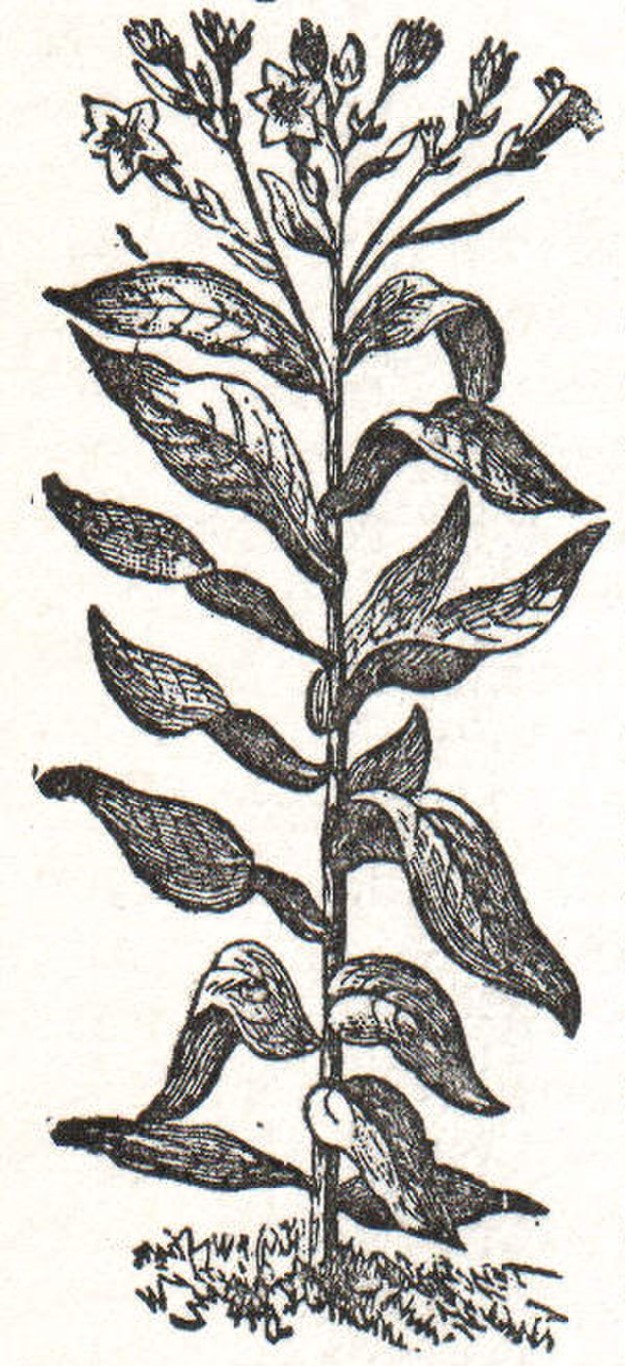
Pros
A great thing about Virginias is the nuance and range of flavors you can get with them. The different varieties (Red, Stoved, Bright, etc.) are designated by how the leaf is harvested and processed. There are a lot of flavors you might get out of Virginias—hay, fruit, grass, citrus, and bread are some you’ll often hear. Their high sugar content makes them a great candidate for aging and offers a more natural sweetness than we often get with Aromatics.
Virginias are an excellent base for bringing a blend together, so there’s a lot of different things you can get under the Virginia blend umbrella. It’s a wonderful format for experiencing the different condiment tobaccos and exploring the palate.
Cons
Maybe “cons” isn’t the right word. Really, the biggest drawbacks of Virginia blends to beginner pipe smokers are sort of benefits too. You’ll see what I mean.
The first thing you’ll be told about Virginias as a beginner is to watch out for the tongue bite. Although the high sugar content of Virginia tobaccos has its benefits (aging, sweetness), it also can lead to a hot burn and some Virginias are notorious for tongue bite for the inexperienced, and even many experienced pipe smokers.
That being said, this shouldn’t be a disqualifier for a beginner. My early experience with some straight Virginias helped me find my cadence and be conscious of my pace, draw, and how I was packing. So, I wouldn’t discount straight Virginias altogether as a beginner, they can be very helpful.
Another issue a beginner might have with straight Virginias—they may not seem all that flavorful at the onset the way Aromatics and English blends are. There’s a lot of nuances to their flavor and what they bring to a mix, but most Virginia varieties aren’t going to sit on show like the cherry from a top flavoring or the smokiness from Latakia. This however makes them interesting once you’ve developed your palate a bit, because once you notice their subtlety, it can unlock that appreciation for the nuances in all kinds of blends that use Virginias.
So, similar to the hot burning of Virginias, this is a half con half pro really. In addition to helping with cadence, my early foray into Virginias brought a breakthrough in picking up on some of the discreet pleasures of pipe smoking, and I distinctly recall trying blends I had already been smoking and finding the Virginias in them in a way I hadn’t before. So once again, sometimes obstacles are a good opportunity to learn. Now Virginias make up a lot of what I smoke.
Virginia Perique
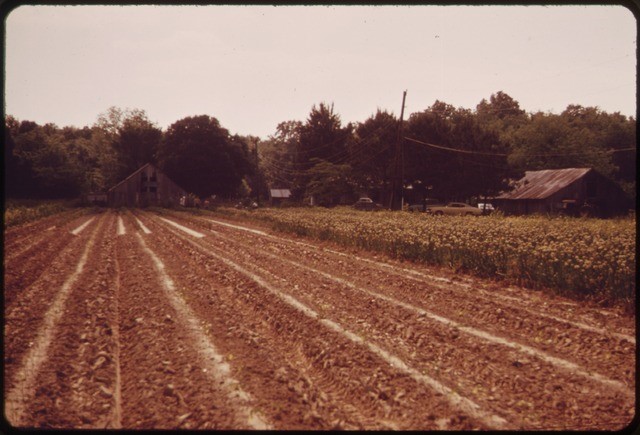
I’ll also include as part of the Virginia blends the ever-popular Virginia Periques, usually referred to as VaPers. Perique is bold and isn’t everyone’s cup of tea. When it is, it often didn’t start that way. The condiment has a spice to it, and being made from Burley tobacco, has a high nicotine content. So, it may or may not be for you as a beginner, but Perique is a slow burning condiment tobacco that is great for taming the bite of Virginias. A VaPer that is light in the Perique might be a great way to navigate cadence without too hot-burning of a blend while also giving a palatable introduction to Perique.
Virginia Recommendations
Capstan Gold Navy Cut
- Tobacco: Virginia
- Flavoring: Fruit, Citrus
- Cut: Flake / Ready-Rubbed
- Strength: Mild - Medium
- Packaging: Tin
As I discussed, some of the drawbacks to Virginias—especially straight Virginias—for beginners, can be positives if used as a learning opportunity. So, a good straight Virginia seems appropriate here. Mac Baren Virginia No. 1 was the first one I picked up. However, I recommend Mac Baren's Capstan Gold as a beginner blend that might help foster an awareness of cadence and the character of Virginia tobacco while offering more than just a lesson.
Not too strong, but not totally docile, the strength is great for a beginner pipe tobacco. Capstan Gold features a good mix of Virginias, and gentle embellishments from the flavoring. While you still have to respect it on the draw, it’s not the same biter as some other straight Virginias.
I also appreciate this one for the options it presents. You can try the ready-rubbed or the flake, and there’s even Capstan Original Navy Cut, which is a good option if you want something that kicks up in strength a tad.
Peter Stokkebye PS 402 Luxury Twist Flake
- Tobacco: Virginia
- Flavoring: Caramel, Misc
- Cut: Flake
- Strength: Mild – Medium
- Packaging: Bulk
Luxury Twist Flake from Peter Stokkebye is likely a hospitable option for anyone looking to branch out from Aromatic blends. This straight Virginia flake next to a common Aromatic is flavored mildly—but perhaps more generously than most straight Virginias. The allure of Black Cavendish in those Aromatics is its neutral profile and its adeptness at taking on top flavoring. What we have here is top flavoring that is employed as a sweet harmony to the Virginias’ melody. A sugariness with caramel depth in balance with the tangy, grassy, bready notes of the natural Virginia results in an affable, satisfying smoke.
Charatan Rolls
- Tobacco: Cavendish, Perique, Virginia
- Cut: Coin
- Strength: Medium
- Packaging: Tin
We now move into Perique territory with Charatan Rolls. This coin cut VaPer with a Cavendish center was created as an answer to the discontinuation of Dunhill’s DeLuxe Navy Rolls, now returned under the Peterson tobacco marque. Charatan made a whole line up tobaccos in Dunhill’s absence that have been enjoyed in Europe for several years now, but just some months ago, we in the States were delighted to have them join the US market.
Charatan Rolls in particular offers a fantastic introduction to the VaPer genre. Perique is a hefty varietal, with just a little bit going a long way. Like any potent seasoning, the right amount can totally enrich a flavor profile, but it’s an acquired taste for some. Chartan Rolls wonderfully delivers a mild Perique sensation, dynamically in balance with the bready, naturally sweet Virginias. The Black Cavendish center adds a creaminess and mellowing of the overall blend making this a truly approachable mixture for the Perique uninitiated.
Mac Baren Golden Extra
- Tobacco: Burley, Virginia
- Flavoring: Cocoa
- Cut: Ready-Rubbed
- Strength: Mild/Medium
- Packaging: Tin/Bulk
Mac Baren’s Golden Extra isn’t so much a Virginia blend as a Burley blend with some Virginia, brought together with a subtle cocoa top note. I didn’t want to go too much into Burley-centered blends in this piece—it’s a varietal that is often used for its nicotine content, body, and capacity for taking on flavors. In and of itself, Burley has a mild, neutral taste, often described as imparting nutty, woody notes. This can be somewhat uninteresting to newcomers, but as the palate attunes, you realize how much nuance there is to Burley. Enriched with light cocoa notes and Virginia sweetness, Golden Extra is a great introduction to Burley beyond a varietal appreciated for its utility, but for what it can bring to a flavor profile.
Things to Keep in Mind
Here are some tips and other information to consider so that you’re making as informed a decision as possible and getting the most out of your pipecraft.
Don’t Choose the Tobacco on Smell Alone
What we call the tin note or bag note is the aroma you get right when you open that container. It’s easy to think this scent translates to the taste of the tobacco, but that isn’t always the case. In fact, it may not even be very accurate to the room note.
This cuts both ways—a wonderful aroma may not be so pleasing of a smoke, but an offensive tin note may not mean a bad smoking experience.
Starting With a Few Small Quantities of Bulk
I know bulk makes it sound like you’re buying Costco quantities, but not quite. Bulk tobaccos generally come in a range of sizes. But this usually includes a 2 oz. option, sometimes even 1 oz.
I made sure to include a number of bulk options here because (in addition to them being blends I genuinely love) they’re cheaper and perfect for exploration. You can start uncovering your taste without spending too much on something you end up disliking, then apply what you learn about your taste when you want to try some boutique blends.
Just remember, bulk usually comes in bags, which are fine as temporary storage. But you’re best off getting some other means of storage, even if you’re not cellaring them and just using them for your current stock.
But speaking of cellaring…
Cellar What You Don’t Like
To the new pipe smoker, cellaring might sound like some real aficionado, obsessive behavior. It’s really not (I mean, it can be if you want). “Cellaring” makes the whole practice sound like a grand undertaking. It’s simply storing in airtight containers—usually unopened tins or mason jars—stowed away from sunlight in a consistent, not too humid environment. Not need to convert the basement or build a bunker. You can read our blog on the subject to learn more about cellaring tobacco.
If a blend really isn’t working for you, go ahead and start aging it. Tastes change in more ways than one, both the qualities of the tobacco will change as will the preferences of the smoker, especially if they’re new to pipe smoking and haven’t ventured much into more full-bodied blends or haven’t found the nuances in varieties like Virginias. You already bought the stuff, so what do you have to lose?
The exception however is that many Aromatic blends shouldn’t be aged long. However, if their flavor was imparted from an exposure such as barrel aging as opposed to spray casing, by all means.
Give a Little Bit of Everything a Chance
When it comes down to it, you like what you like and there is no shame in that. If you get into fruity Aromatics and that’s all you ever enjoy, well, the key word there is enjoy. You’re enjoying your Aromatics, ergo you’re enjoying a pipe. You’re doing it right in my book.
But I do encourage beginners to be curious about everything and try everything. Not only is it good for developing and navigating your preferences, but it’s good for your technique as well. One blend might work better in one pipe and then it’s a whole different experience in another. One cut might need to be packed a little bit differently than another to get it right. You like to dry out this blend for this long but when doing it with that one it’s too dry.
Learning about pipes and pipe tobacco and finding your rhythm is like stepping into another culture. It’s good to go in with some best practices, have some idea of how it all works and any self-sabotaging behaviors to avoid. But it’s engaging that truly begets clarity. It’s through osmosis that the intricacies of customs and practices start to be understood not in isolation, but in relation to a larger cooperation.
Hopefully this guide has provided a good place to start your exploration.
- Daderot, Public domain, via Wikimedia Commons
- Unknown author Unknown author, Public domain, via Wikimedia Commons
- National Archives at College Park, Public domain, via Wikimedia Commons
- andrew welch andrewwelch3, CC0, via Wikimedia Commons (thumbnail-text added to original)



